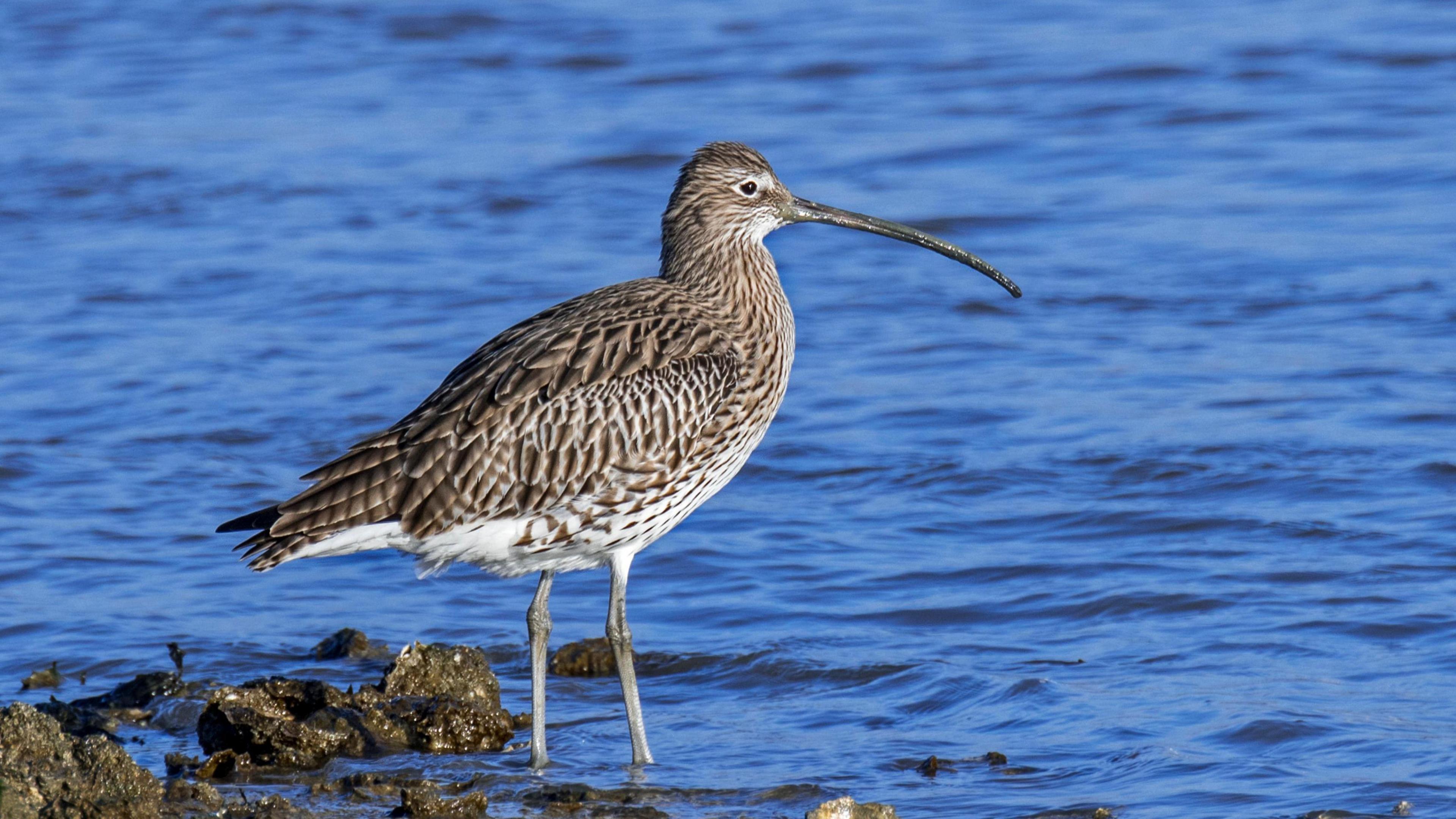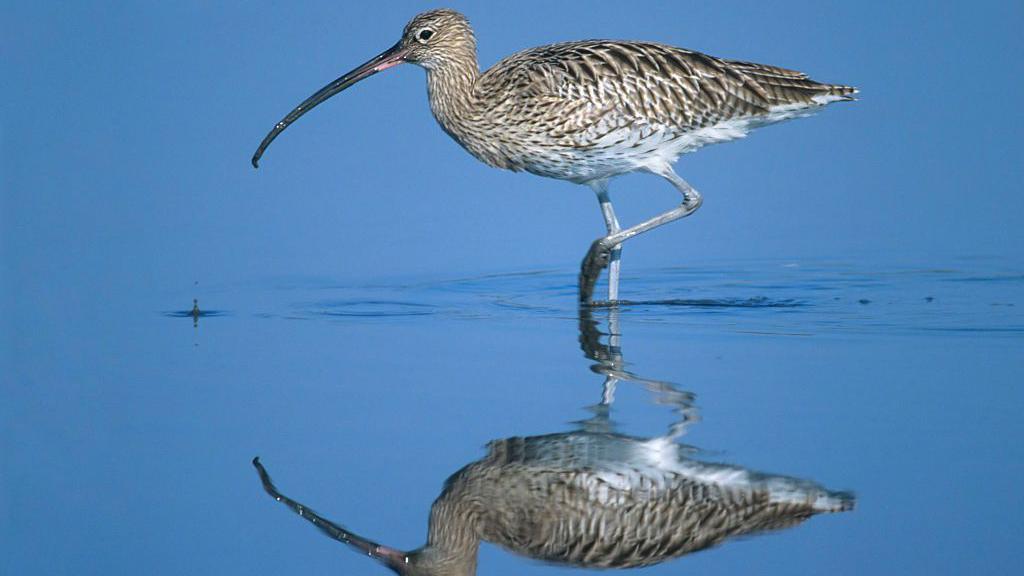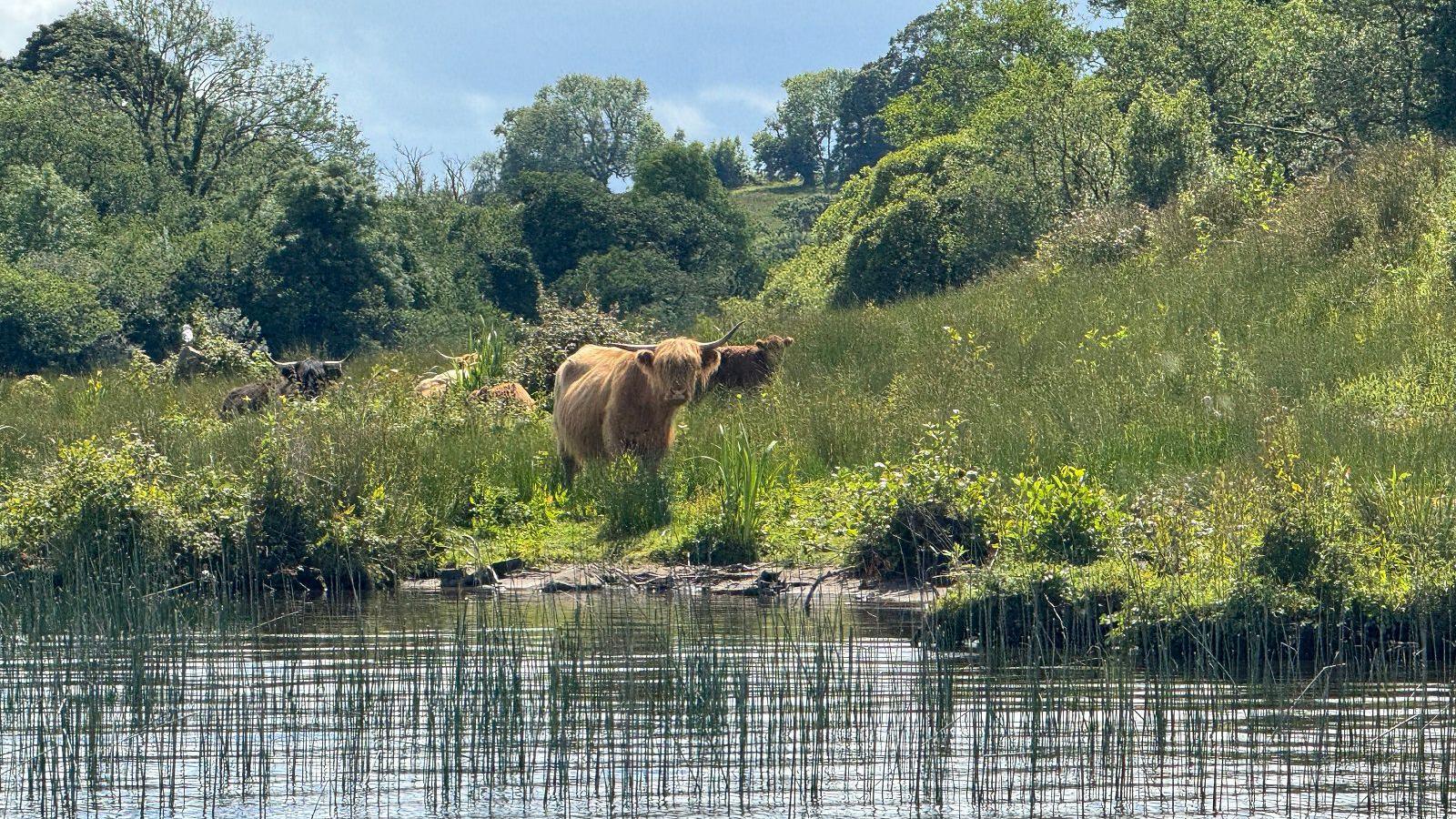Curlews 'thriving' in parts of Northern Ireland

The curlew was once common across Northern Ireland, with its long bill and haunting, bubbling call
- Published
"We've had massive declines all across Northern Ireland, but I'm really proud to say this bird is still holding on and it's still doing well in Fermanagh."
RSPB Reserves Manager Amy Burns has watched the return of the curlew to her beloved Lough Erne over the past four years of the EU-funded Curlew LIFE project., external
The scheme has also seen the species flourish at Glenwherry in the Antrim Plateau.
In this final year, breeding pairs have reached 52 in Glenwherry and there have been a record 20 fledglings on the Lower Lough Erne Islands Reserve.
'Enabling birds to thrive'
An EU scheme has seen the species flourish at Glenwherry
The curlew was once a common sight across Northern Ireland, but numbers have fallen by more than 80% since the 1980s.
The Curlew LIFE project identified five areas across the UK suited to supporting the declining breeding waders, including the two in Northern Ireland.
The species has now been brought back from the brink of extinction, and farmers were heavily involved in the turnaround.

Amy Burns from the Lower Lough Erne reserve is celebrating the most successful fledgling season yet
"Most of our work is undertaken with farmers in the wider landscape, to ensure they get into agri-environment schemes that allows them to manage for species like curlew and get paid for doing so,” said Amy.
"And the work that we have done on the [Lough Erne] reserves is more intense, we get to manage it as a reserve.
"We have kind of similar-type farming operations. We have livestock out grazing, we manage the grassland, we remove scrub and that's enabled those birds to thrive," she added.
'Real hope'

The LIFE Project works with land managers and communities to improve habitat and raise awareness of curlew conservation issues
Katie Gibb, the RSPB's Conservation Manager for the Antrim Plateau, said the impact is clear.
“Over the course of the Curlew LIFE project, we’ve seen 202 chicks fledge, some of which have already started to return to the breeding population, resulting in a 40% increase in pairs in just one year.
"This is an incredible improvement compared to the 116 fledglings recorded between 2011 and 2020.
"It gives us real hope, allowing us to shift our focus from preventing extinction to managing a recovering population.”
In County Fermanagh, the bird returned to an island in Lower Lough Erne, even fledging for the first time in living memory in 2024.
'Rewarding to see efforts pay off'

Cattle on an island in the Lower Lough Erne Reserve
Amy Burns said the success of the curlew is testimony to the work staff have done.
"It's rewarding to see all our efforts pay off with an increase in breeding pairs over the project and such strong fledging success recorded this year.
"The increase in fledglings shows that the habitat improvements we’ve made, particularly the wet feature creation, are making a real difference for the curlew."
The end of Curlew LIFE is being marked with a two-day international conference in County Fermanagh.